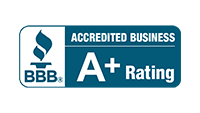
Learn how to audit your website like a pro with our easy guide on how to do an SEO audit. An SEO audit helps determine what might stop your website from appearing higher on search engines. It is like a check-up for your website. An SEO audit can ensure your website is doing well and help you beat competitor websites. But remember, different websites need different things to perform well on search engine result pages (SERPs).
Optimize your website like a pro with this comprehensive guide. We will cover all the essential elements of an SEO audit, including a wide range of SEO ranking factors to consider during a site audit and optimization process. Skipping this auditing step can significantly decrease the chances of your website ranking on search engine result pages. However, correctly performing an SEO audit requires significant experience, knowledge, and access to the appropriate tools.
Should You Conduct an SEO Audit?
An SEO audit is necessary for any website to improve its search engine rankings. Conducting a thorough audit will give you valuable insights into how your website stacks up against the competition. You have to do more than post high-quality content and expect to see results. It is important to understand why your site is performing how it is, and an audit does just that.
An SEO audit will help you prioritize the most important actions for your website. You can focus on the things that will significantly impact your search engine rankings. You will avoid wasting time and effort on something that won’t make a difference. By understanding the data from your audit, you can make better decisions and get better results for your target keywords.
What are Ranking Factors?
Writing great content is important if you want your website to rank well in search engines. Having great content will allow you to attract natural links, mentions, social votes, and clicks from people in your industry and niche, which will help you become an authority on your subject. But it’s also important to optimize each piece of content for SEO.
Here’s a list of things to avoid:
- Don’t have too many short pages (less than 300 words) without images.
- Don’t use content copied from other websites.
- Don’t have the same content on multiple pages of your website.
Write your titles naturally, and only have a few posts covering the same topic with different keywords. For example, instead of having various articles titled “Building an App,” “How to Build an App,” and “Build an App,” it’s best to combine them into one bigger article.
Here’s a checklist of things your website’s content pages should have to rank well. Use it as part of your SEO audit:
- Original content that readers find first on your website.
- Original images that searchers first find on your website.
- At least 800 words, ideally between 1250 and 3000 words, depending on the page’s intent and the competition.
- 5 to 7 pictures.
- At least 1 video.
- A title tag with at least four words.
- A headline (H1) tag.
- Sub-headlines (H2, H3, H4) tags.
- Proper grammar and spelling.
- High-quality supplementary content like a sidebar or relevant information in the navigation.
What Boosts Your Search Engine Ranking?
What is a quality score for your website?
Google assigns a “Quality Score” to every website. This score is based on how Google thinks your website is doing overall. The higher your Quality Score, the better your chance of your website appearing higher in searches.
Google looks at how easy it is to use your website and how long people stay on it. If people leave your website quickly, it can lower your Quality Score. Some things that can help improve your Quality Score include making it easy to navigate your website and ensuring people want to stay.
Let’s review a list of things we need to check to ensure your website is doing well. This will help to see what is working and what needs improvement. Here’s a list of things to look at:
- Click Through Rate (CTR): Compare how often people click on your website when it shows up on a search page to other websites that show up too.
- On-Page User Metrics: Look at how people use your website once they get there. See how long they stay, if they find what they were looking for, and if they leave right away.
- Traffic Metrics: See how many people are coming to your website from links, social media, etc.
- Link Building Metrics: Check the links that point to your website from other websites. Ensure they are good links related to your website and look natural.
- On-Page Content: Compare your website’s content to other websites using “vector graphs.” Look at how related the words on your website are to those on other websites.
It’s important to look at the top websites and those performing poorly. Websites not performing well can you what not to do.
Key Technical Components of Your Website
Sitemap
A sitemap is a map of your website that tells Google which pages to check and how often they’re updated. You can also tell Google which pages are unimportant and which ones not to check. You can have Google check your website using the Google Search Console. But Google will most explore your website by following the links and checking all the pages. This way, it can also see which pages are important on your website. So, it’s important to link your important pages the most and link them from pages with a lot of traffic, content, and user engagement.
- Tip—When creating links within your website, using keywords you want the linked page to rank for as the text you click on (called the “anchor text”) is a good idea. This can help the linked page rank better for those keywords. However, try not to use the same keyword repeatedly as the anchor text because this can be seen as attempting to cheat the system. Instead, use a variety of different keywords for the anchor text. Also note that it’s okay if the same anchor text is used in sitewide link areas, like the header or footer, because Google understands that.
Google Indexed
Checking if your site is indexed properly is essential. You can do this inside the Google Search Console. Ensure that all your pages are crawled and indexed and that you don’t have any 404 errors or page indexing issues. To check if your website is in the Google Index, search for this: “site:thedomainname.com.”
If your site appears as the first result, it is indexed. If not, then it is not indexed and has been manually penalized by Google and, therefore, “de-indexed.”
Robot.txt File
The robots.txt file allows website owners to tell search engines which pages or sections of their site should not be crawled or indexed. It’s important to check that the file is structured correctly and doesn’t accidentally block important pages from being indexed. Additionally, it’s a good idea to check if the file is blocking pages that could cause duplicate content issues, such as tags and categories. Although having duplicate content on your site may not hurt your ranking, keeping your site as clean as possible by preventing these pages from being indexed is better. You can also prevent certain pages from being crawled and indexed by using the no-index meta tag inside the page.
.htaccess Files
The .htaccess file is like a set of instructions for your website. It tells the server what to do when someone accesses your site. For example, you can use it to change how certain pages look and block certain files or folders from being seen by the public or bots. This is useful when building a website you don’t want others to see yet. It can also hide a website you have made, like a Private Blog Network, and hide content from your competitors so they don’t know about it.
Site/Domain Age
The age of a website or domain can affect how trustworthy it is in the eyes of search engines like Google. Websites registered for a long time without expiring are considered to have more “domain age.” However, this only matters if the website is healthy in other ways, like not having spammy links or penalties. If a website has a history of spam or being de-indexed, age won’t matter, and it won’t rank well on search engines. Also, if a website’s registration expires, it loses its age and any trust signals that come with it. But if it is re-registered, it can still be used as long as it doesn’t have a history of spam or de-indexation.
Friendly URLs
Friendly URLs are when the web address of a page is easy to read and understand. It’s important that the main part of the address called the URL, doesn’t have any extra stuff after it, like numbers or special characters. For example, a good URL would be www.example.com/about-us, while a bad URL would be www.example.com/?postid=23345. Friendly URLs are important because they help Google understand the page and what keywords to associate with it. It also makes it easier for people to remember and share the link. So, it’s best to stick with simple, easy-to-read URLs for all the pages on your website.
Canonical Lookup
Canonical Lookup is a way to check where a website is located. It’s important to ensure that a website’s www and non-www versions lead to the same location. This can be done by visiting both website versions and seeing if they lead to the same URL. It’s also important to check if the website appears as HTTP or HTTPS and if there are any issues with redirecting from HTTP to HTTPS.
Keywords and Tags
Having the main keyword you want your page to rank for in the title tag is important. But make sure you don’t repeat the keyword too many times. It’s also important to make sure the title is interesting and matches the page’s content. This way, when people see it in search results, they’ll be likelier to click on it. And when they come to your site and like the content, Google will give your page a better ranking.
Spammy Titles
You should never make your titles sound fake or spammy by repeating keywords or using words that don’t make sense. Google uses smart technology to catch this kind of thing, and if they see it on your page, it can hurt your ranking.
Using Images on Your Website
It’s important to use unique and high-quality images on your website. Don’t just copy pictures from other sites or use free stock photos. Instead, edit the images to make them unique. You can check if your images are unique by searching for them on Google Images. The image is unique if your website shows up as the top result. Inserting videos from your YouTube channel can also help you rank higher than competitors. When you’re adding images to your website, make sure to give them a good file name, add a caption, and include ALT tags. This will help Google understand what the images are about. You should have at least 5 to 7 photos on a webpage with 1000 words.
Word Count
It’s important to have a lot of content on your website. About 1250 words are ideal now, but you should check what your competitors are doing. Sometimes, you need even more words, like 5000, to show you know much about your topic. Make sure your website is better than the others in your field. Having less than 800 words on a main page you want to rank well is not good.
Keyword Density: How to use Keywords
When you make a website, it’s important to use the right words so people can find it. One way to do this is to use keywords. Keywords are the main words you want your website to show up for when people search for something. To ensure you use the right keywords, you can look at other websites that rank well for the same thing. Using 2-3 % of the total words on a page works well. But it’s about more than just using the main keyword. You also want to use other words related to the main keyword. It helps ensure that your website is about the topic you want it to be about. So, to make sure you use the right keywords, look at websites that are doing well and use similar words on your website.
Using Different Types of Media
Having different types of media on your website is good. You can add slideshows, audio recordings, and videos from your YouTube channel or other popular websites. This will show Google that your website is up-to-date and has a lot of different types of information.
Internal Versus Sitewide Links
Internal links are links that point to other pages within the same website. Sitewide links point to a specific page or resource on a website and are included on every page. Both links can benefit search engine optimization (SEO) and user experience but serve different purposes. Internal links help users navigate a website and can help search engines understand the structure and hierarchy of a site. Sitewide links can help search engines discover new pages on a website and can also be used to promote specific pages or resources.
Content Freshness
Depending on your industry, it’s important to regularly add new content to your website or update existing pages. This can include further information on a topic or updates on industry news. Google gives a temporary boost in rankings for sites that regularly update their content, showing that the site is actively maintained and provides fresh information for users. However, ensuring the updates are relevant and add value to the user experience is important.
Evaluation of User Experience and Website Structure
Navigational Issues
It’s important to have clear and transparent messaging, lead users to the relevant pages, and have organized and well-structured navigational units such as dynamic navigation, breadcrumbs, internal and related links, external links, sitewide categories navigation, and a user sitemap. This will help users easily find the information they are looking for and increase the site’s usability.
Supplementary Content
Supplementary content is extra information that appears in secondary areas on a page, like widgets or product descriptions. However, if this additional content is not related to the main content on the page, it may be seen as a problem by Google.
Too much irrelevant supplementary content can lead to Google penalizing the page for the keyword it’s trying to rank for. This type of content can also weaken the main focus of the page’s topic and decrease its quality.
The Importance of Having a Blog
Having a blog is crucial for many websites doing SEO. Almost every industry needs a blog to provide relevant information on the topic and establish its authority in the field. The blog should be optimized for SEO by providing valuable content and improving the user experience.
Blogging, Traffic, and Commerce are all interconnected, but the strategies for each blog may vary depending on the industry. For example, a small niche e-commerce website may benefit from a blog, whereas a large site like Amazon may not need one, as their product pages and existing authority attract enough traffic and promote their content effectively. The user engagement and conversion rates are also high due to the optimization and science behind their engine.
Understanding Click Depth to Main Pages
Click depth to main pages is the number of clicks it takes for a user to reach the important pages on a site. When users enter the site from an internal page, Google wants to know how many clicks they need to get to the main pages. And if they start on the homepage, Google wants to know how quickly they can access the hot-selling product page.
A confusing or inaccessible website, with links leading to dead ends or wrong directions, results in a poor user experience. This can cause confusion and an increased bounce rate.
The Benefits of an Effective Silo Structure
A good silo structure for your website ensures visitors and search engines can access only relevant links easily. This involves creating a clear hierarchy of pages, which helps keep the link juice flowing to the right pages.
A well-organized silo structure can greatly improve your website’s search engine optimization. This means that your website has a better chance of ranking higher. This is due to a more efficient distribution of ranking power and link juice to the appropriate pages.
Bounce Rate
Measuring how long users stay on your site and how often they leave right away (known as the bounce rate) is important for your website’s success. You can see this information in Google Analytics.
If your bounce rate exceeds 55%, it could hurt your search engine rankings. Discover why users leave your site and where the traffic is coming from. If it’s coming from irrelevant pages, that could be a problem. Improving this factor will increase users’ time on your site and give you a better on-page metric. The lower the bounce rate, the better.
Here are some basic metrics to aim for:
- Keep your bounce rate under 55%
- Ensure visitors spend at least 0-10 seconds engaged on your site
- Aim for each visitor to view at least two pages
- Aim for a time on site of 2 minutes or more.
Stay Informed with Google Notifications
Once you’ve connected your website with Google Search Console, it’s important to watch for any notifications from Google. This can include automated or manual messages about changes to your site, such as switching from HTTP to HTTPS. It could be restructuring internal pages and URLs. These notifications will show up in your Google Search Console inbox. Ensure you stay informed about any potential issues with your site’s visibility.
404 Errors and Backlinks
Keep an eye on broken links and missing pages on your site by checking the Search Console. Fix any broken internal links promptly, and tell Google you’ve fixed the issue. Too many 404 errors can harm your site’s ranking, but it’s only a major concern if external sources point to non-existent pages.
Checking Your Website’s Speed and Appearance
Ensuring your website is fast and easy to use is important for visitors and Google. A slow website can cause visitors to leave quickly. Google wants to provide quick access to information.
To improve your website’s speed, you can use a tool like Pingdom to test your site from different locations. Consider using a CDN provider like Cloudflare or installing a caching plugin to reduce database queries and server load. When choosing a hosting company, consider factors like your CMS, expected traffic, and goals for the site.
The following page speed metrics should be considered:
- Load time of less than 4 seconds
- Consistent server uptime (choosing a quality hosting company is important if your server frequently goes down)
Local Versus Social SEO Audit
When optimizing your website for search engines, it’s crucial to focus on both local SEO and social SEO.
Local SEO helps your business appear in search results for people searching in your area. This includes listing your business in directories like Google My Business and optimizing for local keywords. You must ensure that your business information is accurate and consistent. Building backlinks from local websites and positive reviews on platforms like Google My Business can boost your local SEO efforts.
Social SEO optimizes your social media profiles and content for search engines. This involves completing and optimizing profiles with keywords and creating shareable, engaging content. Social signals like likes, shares, and comments can also impact your search engine rankings. Regularly posting high-quality content on social media can increase the chances of it being shared and reaching a larger audience. Promoting your website on social media can greatly drive traffic to your site.
By focusing on local and social SEO, you can improve your search engine rankings and attract more traffic to your website.
Completing a SEO Audit
In conclusion, a thorough SEO audit can reveal critical areas that require attention and action. Website owners can boost their search engine rankings and overall traffic by implementing the recommended changes. It is important to remember that SEO is an ongoing process, and regular audits should be conducted to ensure that the website’s performance is optimized. By staying up to date with the latest SEO best practices, website owners can stay ahead of the competition and continue to attract and retain visitors to their site.





